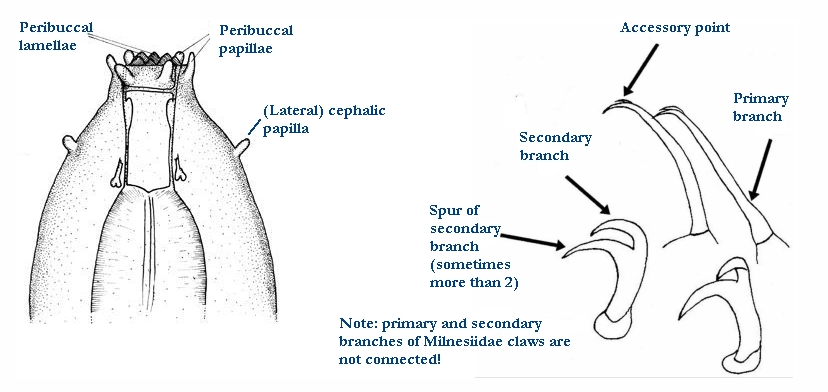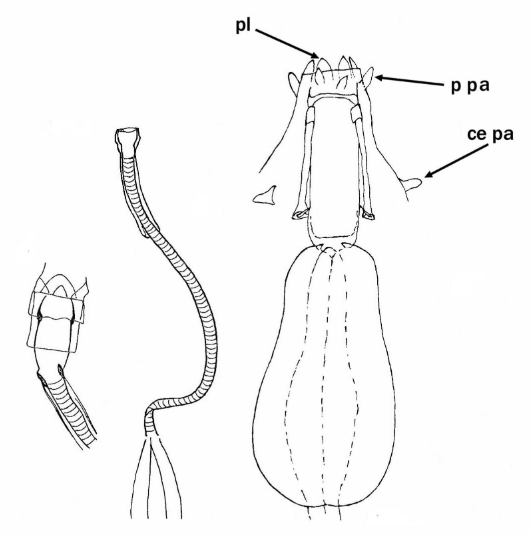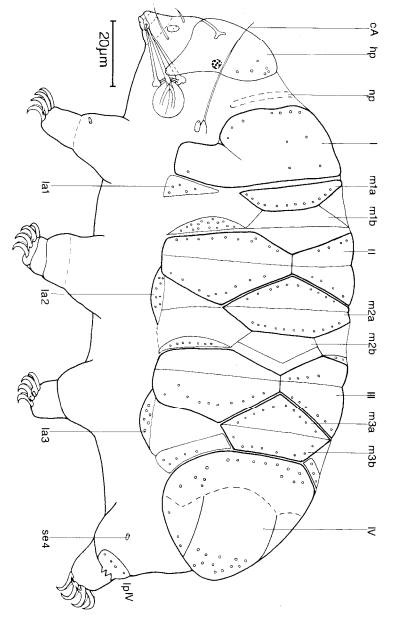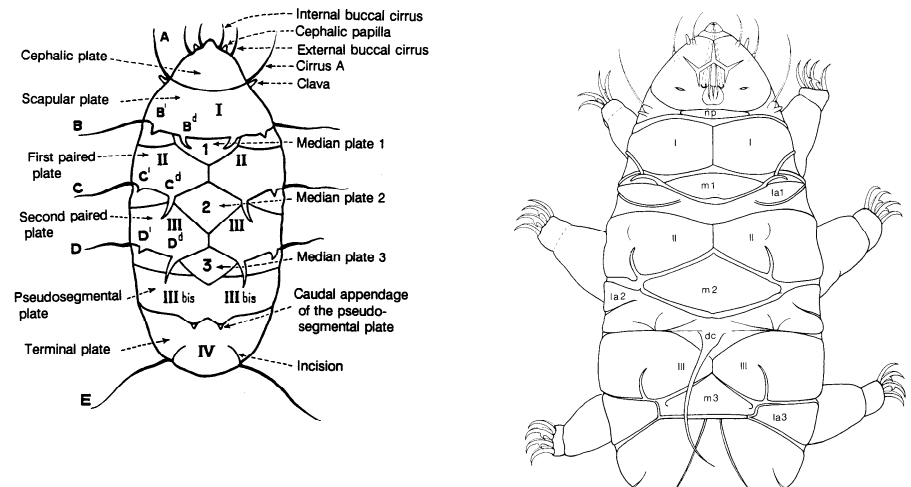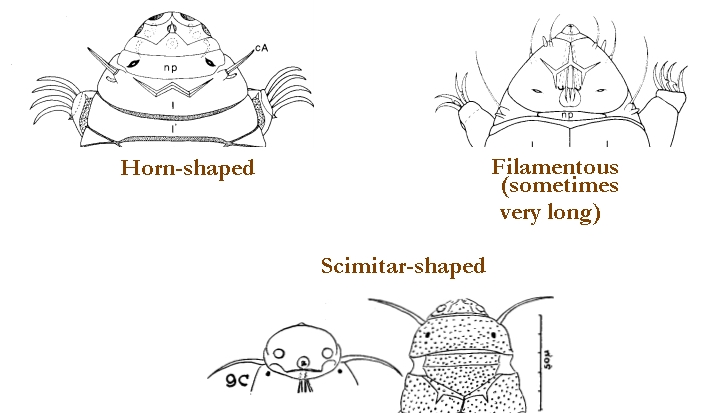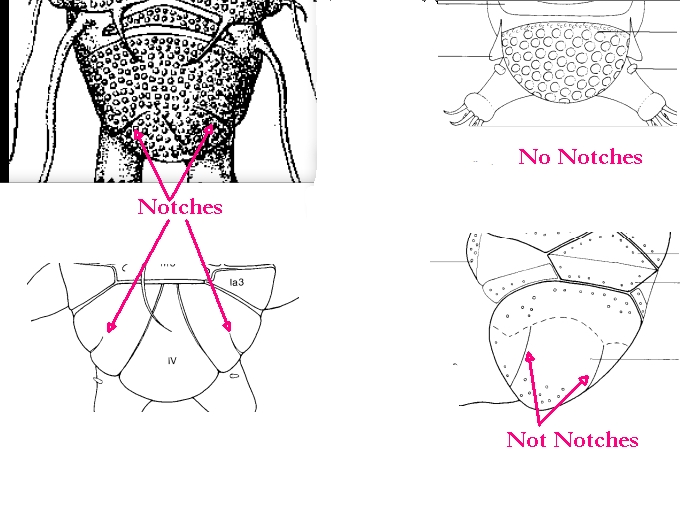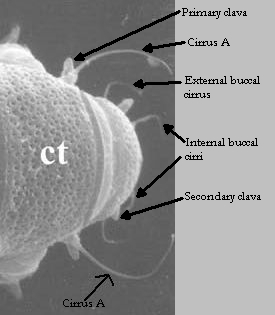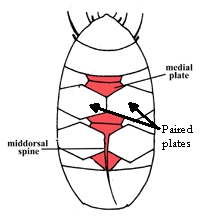Eohypsibioidea from Bertolani & Kristensen 1987 in Marley et al. 2011: “Parachela; claws asymmetric (2121); Eohypsibiidae-type claw pairs; apophysis for the insertion of the stylet muscles (AISM) ridged with lateral caudal processes of crests and hooks.”
Eohypsibioidea from Bertolani et al. 2014: “Double claws of Eohypsibius type (i.e. subdivided into three distinct sections, one on top of the other), and asymmetrical with respect to the median plane of the leg (sequence 2121), with the ability to rotate on their base; double claws similar in size and shape on the same leg; 14 peribuccal lamellae; buccal tube completely rigid, or caudally annulated, in any case with dorsal and ventral crest-shaped apophyses for the insertion of the stylet muscles. Eggs laid freely and surrounded by an ornamented shell.”
Eohypsibiidae from Marley et al. 2011: “Eohypsibiidae-type claws, which are clearly delineated by septa, in linear order, from basal section, secondary branch and primary branch. The angle between basal section, secondary branch and primary branches are different between claws on the same leg and the internal claw can rotate on its base by 180°.”
Genus description from Kristensen 1982: “An extremely slender calohypsibid with reduced legs and claws. Mouth opening large with 14-16 lamellae. A complete set of teeth in the buccal lumen; annulated buccal tube. Apophyses ventrally and dorsally hook-shaped and attached to the stylet retractor muscles. Claws of the Calohypsibius-type, but with lunules. Malpighian tubules ovoid with a small stalk. […] Discussion: The genus Eohypsibius has a buccal apparatus related to Pseudodiphascon (Christenberry & Higgins, 1979) and a claw system similar to Calohypsibius. The annulation of the buccal tube can only be seen after clearing the animals in polyvinyl lactophenol.”
Additional genus notes from Pilato & Binda 1996: “…the furca of the stylets has an unusual shape. We noted that: a) the two branches are slightly arched; b) their apices are not clearly swollen.” Need modification by Trygvadóttir & Kristensen 2011.

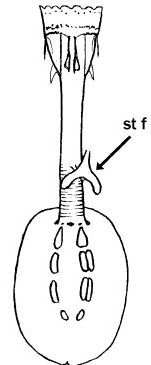
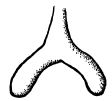
Citations:
Bertolani R, Guidetti R, Marchioro T, Altiero T, Rebecchi L, Cesari M. 2014. Phyloeny of Eutardigrada: New molecular data and their morphological support lead to the identification of new evolutionary lineages. Molecular Phylogenetics and Evolution. 76: 110-126.
Bertolani R, Kristensen RM. 1987. New records of Eohypsibius nadjae Kristensen, 1982, and revision of the taxonomic position of two genera of Eutardigrada (Tardigrada). In “Biology of Tardigrades.” (Ed. R Bertolani) pp. 359-372. (U.Z.I., I Mucchi: Modena, Italy).
Kristensen RM. 1982. New aberrant eutardigrades from homothermic springs on Disko Island,
West Greenland. In Proceedings of the Third International Symposium on Tardigrada, Tennessee (pp. 203 – 220).
Marley NJ, McInnes SJ, Sands CJ. 2011. Phylum Tardigrada: A re-evaluation of the Parachela. Zootaxa. 2819: 51-64.
Pilato G, Binda MG. 1996. Additional remarks to the description of some genera of eutardigrades. Bollettino delle Sedute della Accademia Gioenia di Scienze Naturali in Catania. 29 (351): 33-40.





